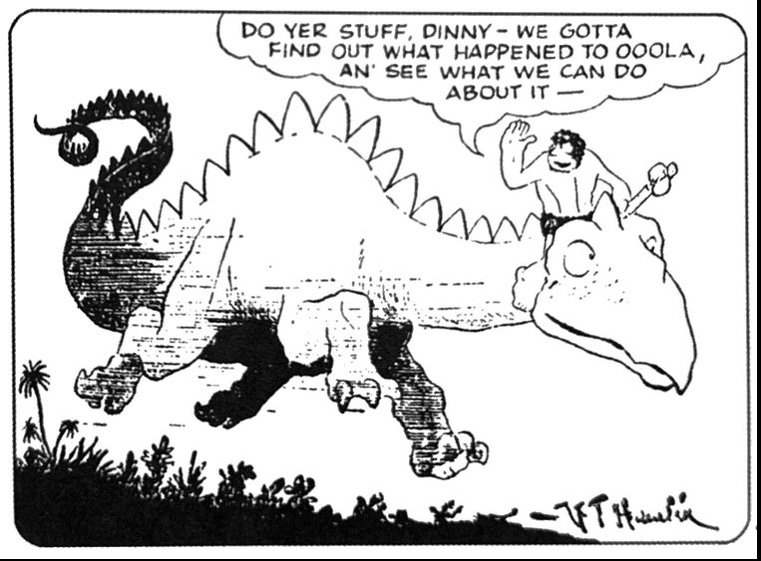
V.T. Hamlin’s caveman epic Alley Oop has been reprinted in several formats before, but Chris Aruffo and his Acoustic Learning Press have exceeded predecessors in several respects. First, the series reprints in parallel the two major eras and artists of the run, V.T. Hamlin’s original and most creative storylines of the 1930s as well as Dave Graue’s wildly imaginative takes on the Oop world in the 1970s. Even better, these dailies are being released in a regular quarterly cadence and at a very affordable price. Finally, these are the cleanest versions of Alley Oop I have seen. Hamlin’s fine line and unique visual style really pop here. Acoustic has also picked up the Sunday reprint series dropped by Dark Horse years ago. And coming in 2023, the reprint series will leap into the 1950s, promising event larger renderings. Hats off to Aruffo for this ambitious and disciplined publishing project. I don’t know if he is profiting at all from all of this, but I certainly hope so. He is doing God’s work.
And best of all, having such pristine and extended examples of Hamlin’s work gives us a chance to put this artist into the center of the American comics canon where he belongs. From Opper’s Antediluvian Ancestors in the first decades of comics history to the mid-century Flinstones, cartoonists have loved projecting into prehistory the folkways of modern life. But Hamlin went far beyond the typical funny anachronisms. His world and politics of Moo, its self-involved King Guzzle, and the conflicts with surrounding kingdoms was the most fully realized, and genuinely satirical, use of prehistory. Like the Marx Brothers’ Freedonia of Duck Soup, and the many foppish rulers and silly fiefdoms Popeye visited in the 1930s, Hamlin’s ancient world vaguely lampoons the political tensions about to engulf Europe in a World war sequel. At the center of it all is Oop himself, a wry, pugnacious and good-hearted figure in the common man hero mold of Popeye. He is bemused by the antics of social climbers, schemers, political fools and institutional authority…against whom he prefers to express himself by fist rather than democratic argument. His was a cultural populism that resonated in Depression-weary America.



But even richer than Hamlin’s world building was his graphic prowess. Few comic artists exercised so many of the expressive levers of the strip format all at once. That fine, controlled line was at once cartoonish and precise. His character design – those grotesque simian faces, ham-sized forearms and calves, comically animated violence – were so specific to Hamlin and this comic world. He varied his panel sizes, progression and timings to craft comic and action sequences in unique ways. Even the typefaces innovated with a wide range of expressive and highly stylized shapes for different characters and occasions. Like the expressionism of Harold Gray, Chester Gould and George Herriman, Hamlin’s visual world stood apart from everything else on the daily comics page and reminds us how personal and immersive the medium could be.

Great news, Steve! I wondered how good the reproductions are and now I know, thanks to you! I enjoy your blog and appreciate the work and intelligence you put into it. Your articles get better and better, man! See ya in the funny papers. – Paul C. Tumey